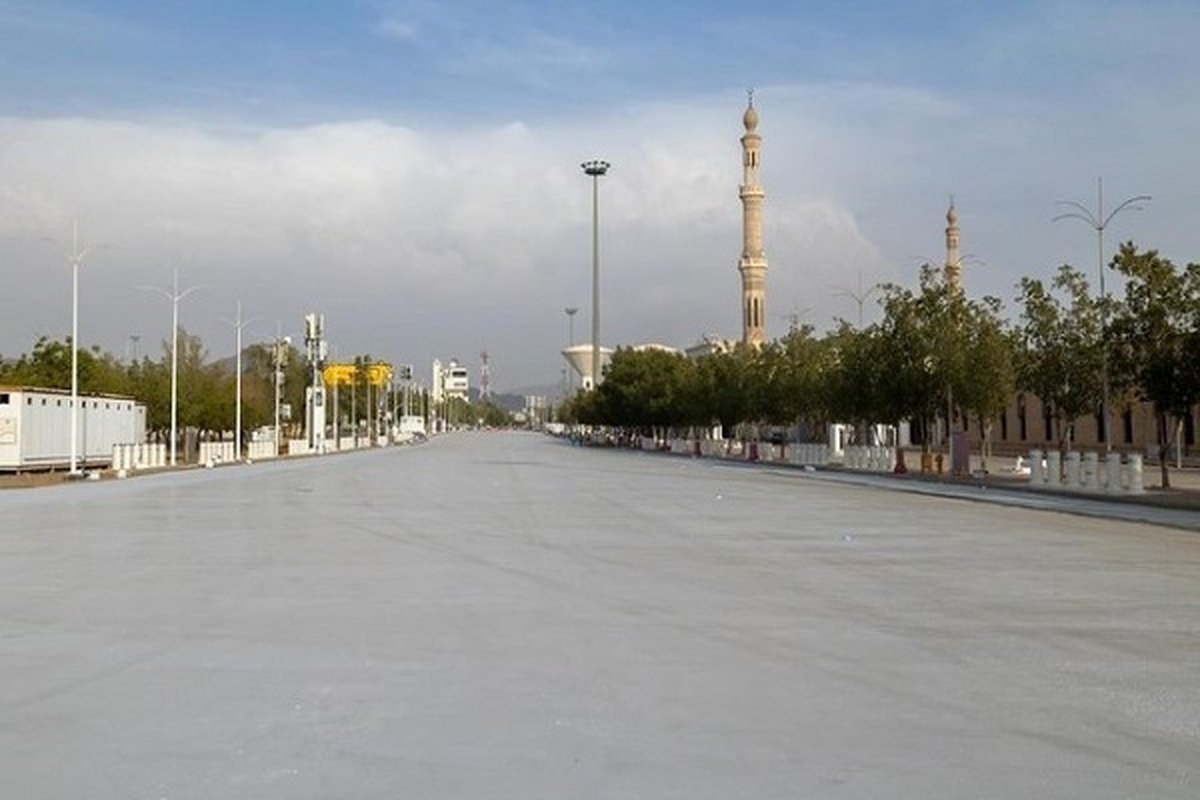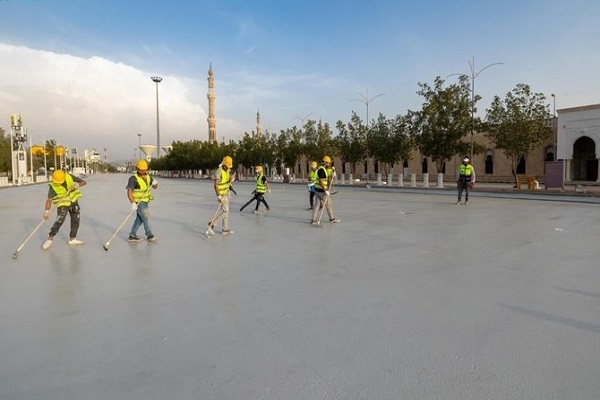Road Cooling Project Launched Near Mecca Mosque


The Saudi Roads General Authority (RGA) has finished coating the asphalt around Namira Mosque near Mecca, using modern technology to lower temperatures and cool the environment for Hajj pilgrims.
The initiative of cooling the asphalt surface of the area surrounding Namira Mosque at the Holy Sites is through using white coating aimed to give solace for pilgrims under scorching sun on the Day of Arafat, which marks the climax of the annual pilgrimage of Hajj.
The white coating, created using materials that absorb less sunlight, helps reduce the surface temperature by about 20 degrees Celsius.
Roads General Authority Spokesperson Abdulaziz Al-Otaibi stressed that the surface-cooling coat of asphalt, which reflects sunlight, was applied in partnership with several entities that all work to serve pilgrims.
Last year, the experiment was conducted on pedestrian paths leading to the Jamrat area, where temperatures are high, and it successfully reduced temperatures by 12 to 15 degrees Celsius. This year, the area was expanded, covering the surroundings of the Namira Mosque, an area of some 25,000 square meters.
Read More:
Al-Otaibi said that the mechanism consists of reflecting sunlight and thus reducing the temperature of the surface to create a more comfortable environment on pedestrian areas.


This initiative stems from the fact that roads absorb heat during the day, with temperatures sometimes reaching 70 degrees Celsius. Roads then release this heat at night, causing a phenomenon known as the “Urban heat island effect,” which leads to increased energy consumption and air pollution.
Al-Otaibi pointed out that the mechanism of cooling roads is carried out scientifically by reflecting sun rays and reducing temperatures during the day and night, and the product used seeks to create more comfortable and easier environments in pedestrian areas, out of a desire to create a healthier environment and a better quality of life.
Source: Saudi Gazette



